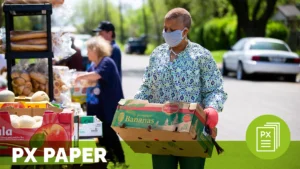Patient Experience Begins with Employee Experience: The Impact of Recognition Programs

By Nate Hamme
This blog is Part One of a two-part series on the impact that employee recognition has on patient experience. Next month, Part Two of the series will detail how misconceptions about employee recognition can be addressed with effective planning and cross-department leadership support and will explain how achievable goals can be attained.
There is a wealth of research on processes and procedures that produce higher patient experience scores. Effective communication, body language, and human resource allocation serve as prime examples. But we often overlook the basic drivers of workforce engagement and motivation— “squishy” concepts like a sense of esteem, belonging, and individual impact.
Providers constantly look for tactics that can improve patient satisfaction and experience scores which drive quality, reimbursement, and other metrics. “Commit to Sit” is a proven method for reframing perceptions of communication. “AIDET” is a terrific framework for individual interactions in a variety of job roles. The tools are there, ready to be used.
Closing the Gap on Patient Experience
Reflecting on recent personal care experiences, it’s clear to me that awareness of concepts doesn’t always equate to effective application. Though the intent is not malicious—many care workers are dealing with understaffing and burnout—there are undoubtedly things we must do better.
If there was a simple solution to these shortcomings, we’d see broader implementation of proven concepts and best practices. And while perfection is impossible in a complex world, there is an overlooked and underrated strategic imperative: Many healthcare organizations fail to acknowledge the positive impact employee recognition has on not only employee experience but also patient experience.
Prioritizing the Employee Experience
At its best, recognition is sourced from a wide variety of stakeholders. Management, staff, and patients and families should be involved and empowered. Comprehensive recognition programs involve many moving pieces—perhaps one reason why 81% of leaders believe employee recognition doesn’t qualify as a strategic priority. I’ve been told first-hand that “it’s too expensive, time consuming, and insufficiently impactful” from care leaders at conferences around the country..
That aside, recognition’s impact is clear. A study by Quantum Workplace found that employees are 2.7x more likely to be highly engaged if they believe leadership teams will recognize their efforts. Engagement, productivity, and performance are 14% higher at organizations with formal recognition programs than those without. And recognition improves employee retention, with Gallup reporting that organizations that prioritize appreciation have workers 56% less likely to be looking for their next job.
Recognition Builds Teamwork
Perhaps most fundamentally, recognition builds better relationships between team members.
Leadership recognition is a remedy to the adage that “people don’t quit jobs, they quit managers.” It demonstrates people are seen and valued. Each recognized act of caring becomes an opportunity to reinforce company values and mission, and it’s fun for managers—reconnecting them to day-to-day caregiving and providing insight into the frontlines.
Peer recognition is essential for building comradery. It engages the largest segment of staff—frontline workers in clinical or support roles—in honoring their capacity to “transform lives.” Acknowledgement within teams naturally leads to improved communication, such as during all-important patient handoffs.
Each has their place. Better relationships between co-workers and their employers lead to improved engagement, loyalty, and a better employee experience—all of which has a significant impact on delivering quality, patient-centric care.
Employee and Patient Experience are Inextricably Fused
Organizations can reap the benefits of a hybrid strategy by focusing employee recognition on acts of caregiving that affect patient experience. Direct recognition from patients, residents and their loved ones provides insight into actions producing higher satisfaction and quality. It’s also straightforward evidence of individual impact. Even a distressed employee, on their hardest day, can say, “I’m here for my patients.”
You can have the newest, most innovative medical tools and technology in the industry. But healthcare is deeply rooted in people delivering a service. If they can’t show up as their best self, then the care experience suffers.
If patient experience is a strategic imperative, then employee recognition must be, as well.
About the Author
Nate Hamme is a leading expert in the field of care worker engagement. As President and Executive Director of Ceca, a 501(c)3 non-profit “Celebrating caregivers”, Nate has worked with a range of senior living and healthcare communities and is an expert in finding innovative ways to recognize and show appreciation to our nation’s care providers.
Nate has written and spoken extensively on workforce issues facing care communities, with features on ABC News7, in McKnight’s Senior Living, Homecare Magazine, Seniors Housing Business, Authority Magazine and Provider Magazine, as well as keynotes and education sessions to some of the largest state and national healthcare and senior living groups.
Related content
-
 Staff & Provider Engagement
Staff & Provider EngagementStaff and Provider Engagement: The Impact of Connecting with Patients and Families
By Corey Kimpson This is the fifth blog in a series of eight by The Beryl Institute’s Global Patient & Family Advisory Board (GPFAB). The intent of this series is to present our perspective on patients’ and families’ lived experience through each of the strategic lenses of The Beryl Institute’s Experience Framework. The Experience Framework
Learn more -
 Culture & Leadership | Staff & Provider Engagement
Culture & Leadership | Staff & Provider EngagementA Toolbox for Work-Life Balance
Do you ever feel like you live at work? Do you have a difficult time getting in enough “ME Time” to balance work and life? In this webinar, we will consider some of our roadblocks that get in our way and identify techniques to support living a more balanced, fulfilled life. Utilizing the Fish! Philosophy
Learn more -
 Culture & Leadership | Environment & Hospitality | Infrastructure & Governance | Patient Family & Community Engagement | Policy & Measurement | Quality & Clinical Excellence | Staff & Provider Engagement
Culture & Leadership | Environment & Hospitality | Infrastructure & Governance | Patient Family & Community Engagement | Policy & Measurement | Quality & Clinical Excellence | Staff & Provider EngagementA Commitment to Human Experience in Essential Hospitals
A Commitment to Human Experience in Essential Hospitals highlights the innovative practices of essential hospitals in enhancing the human experience in healthcare. These safety-net hospitals are crucial for providing care to underserved and marginalized communities, addressing complex medical needs and significant socio-economic challenges. Despite facing financial constraints and staff shortages, essential hospitals excel in creating
Learn more
